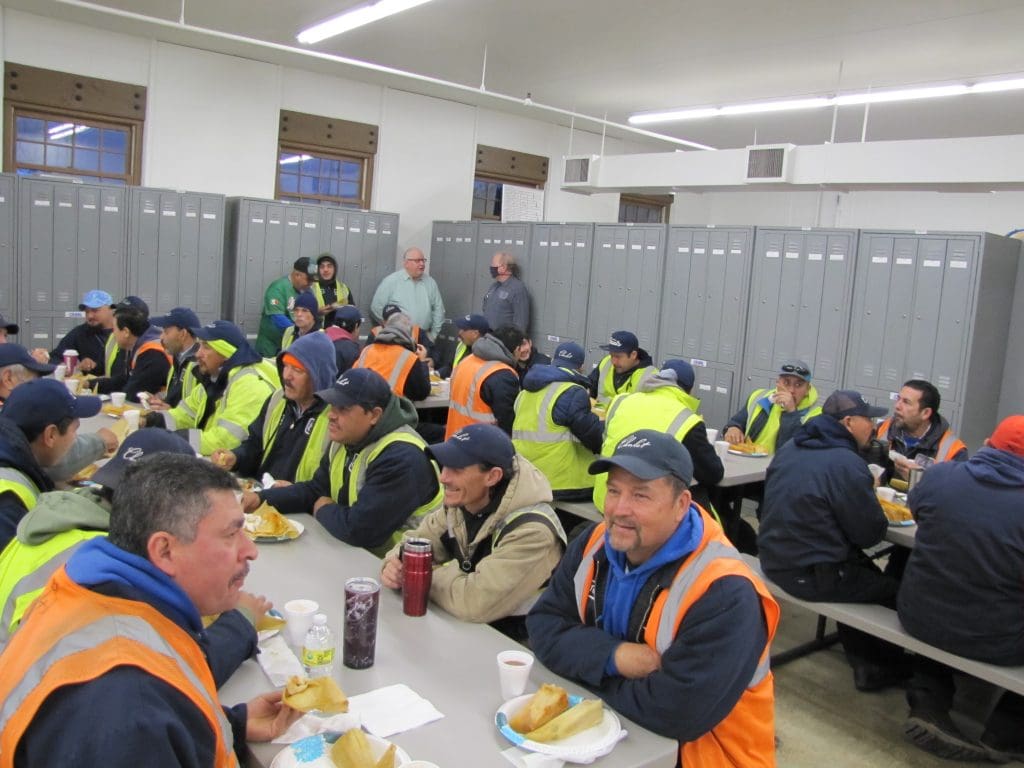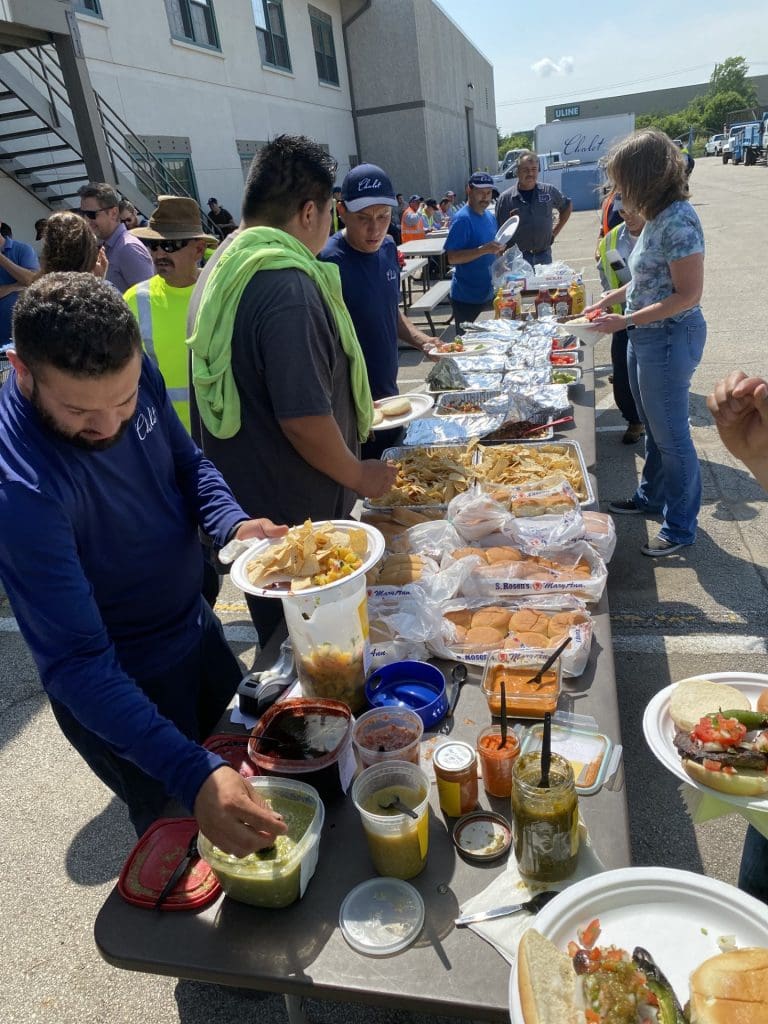
Many lawn and landscape companies have a diverse workforce, but if you’re not taking the time to understand your team’s cultural differences, you could fail to retain your workers long-term.
“Any company or industry that has and embraces diversity can benefit tremendously,” says Pam Berrios, president of Infinity Group, LLC. “Diversity helps companies grow and prosper. If people at all levels of your organization feel heard, seen and included, they will also feel motivated to grow with the company and eventually see themselves in a leadership role, which in turn will help other people take that same step.”
Differing Thoughts and Values
It’s important to understand that there are over thirty different Latin American countries that have their own traditions, beliefs, food and customs. While you may consider your workforce primarily Latino, they have their own nuances, depending on where they’re from. Berrios says it’s a major misconception to think they are all the same.
“I’ve heard this so much in our industry with companies that don’t take the time to get to know their employees and each of their unique and rich backgrounds,” she says.
Berrios says some of the core values for most Latinos include putting God and family over everything.

“Families are large and they are often comprised of extended family and multiple generations living under the same roof,” Berrios says. “After that, work ethics are extremely important. Having camaraderie at work feels like a second family to most of our community, as we usually spend more time at work than at home.”
Debbie Bartsch, a construction production scheduler with Chalet, based in Wilmette, Illinois, adds that Latinos earn loyalty first in the business where Americans follow the organizational chart.
“Latinos prioritize family,” Bartsch says. “They will express the importance of taking time off. Sacrificing this time for work emergencies is frowned upon. Americans are expected to sacrifice personal life and time for work. Company culture is very important to Latinos. Latinos will seek another employer, likely referred by a family member or friend, more so for a lack of positive and nurturing culture over an unsatisfactory pay increase.”
She says onboarding is very important to Latinos and a sincere welcome is a gesture of respect. Berrios says one of the most significant differences in workplace culture between Latinos and Americans is how they see and embrace change.
“One of the things I love about the American culture is that change equals growth and most people understand that at an early age in this country,” Berrios says. “For an immigrant Latino worker, however, change equals uncertainty, stepping out of your comfort zone, fear, lack of stability, etc. This can cause people to leave companies at the first sign of change. Especially from companies where training is not a major priority.”
Berrios says that some owners may think their Latino workers don’t want to grow or change, but if the right training and support are available in their native language, she has seen amazing transformations take place.
“Ambition is misunderstood,” Bartsch says. “With Americans, the individual will stand out as being ambitious. A very ambitious Latino will be quiet or subdued by comparison, for it is up to the collective of peers to initiate recognition of this ambition.”
Berrios adds that Latinos can also have misconceptions about the career possibilities in the landscape industry.
“This is why it is important to create a clear career path and train your Latino employees to know this is a multibillion-dollar industry where you can build a lifelong career and retire comfortably,” Berrios says. “As opposed to just having an hourly job. This training, in my experience, is eye-opening and makes Latinos want to pursue their careers to the highest levels.”
Understanding Cultural Differences
Bartsch says your employees’ cultural differences should be understood, respected and appreciated. Berrios adds you should approach this from a place of empathy, diversity, inclusion, equity and understanding. Bartsch uses Quinceaneras, the coming-of-age celebrations for 15-year-old Latinas, as an an example of how ignoring cultural differences can cause great employees to leave.
“Let’s say a business owner is completely unaware of one of their valued employees having a Quinceanera for his daughter Saturday,” Bartsch says. “The owner does not even know what a Quinceanera is. Friday the owner determines everyone has to come in Saturday as jobs are behind. This employee is now in a terrible predicament. They do not have a relationship with the owner where this cultural difference is understood. They may not feel comfortable bringing it up. If they do not work Saturday, will they lose good standing in the eyes of their employer? Surely, they must be at their daughter’s Quinceanera. Do they try to find a balance of not upsetting their family too much by working a partial day Saturday?”
The key to appreciating cultural differences is to develop relationships, host team building events and offer training.

“Not just technical training but training, coaching, and mentoring in subjects like leadership, communication, management, emotional intelligence, etc.,” Berrios says. “Most importantly, having this type of training available in Spanish. It’s also as important to train American or English-speaking leaders to understand their Latino workforce fully. Even better would also be to create an in-house system where Latino field employees have a path to move upwards in the company and become Latino leaders in the industry.”
Berrios says having Latino leaders in the company will help your workforce see themselves grow.
“Representation is important, along with the right type of training and then making sure you support the person through the change in their roles,” Berrios says. “This helps build that bridge for both field employees and management to work together and closes that cultural gap further.”
Celebrating Diversity
Employee diversity isn’t a challenge to overcome but an aspect to be celebrated as part of your company culture. Bartsch says landscape companies that do this will develop a reputation that will travel fast and far and attract new hires, as destination businesses have this attribute.
Bartsch says this is the second year Chalet has had H-2B employees from Mexico and El Salvador. She says the key has been making them feel welcome and communicating.

Photo: Chalet
“A few crews have one member from Mexico and one member from El Salvador, which is fantastic,” Bartsch says. “Mixing it up causes people to learn about other cultures, creating understanding and respect.”
Bartsch says having food events is one of the best cultural bonding methods. One of their El Salvadorian employees has brought pupusas to work, and other Latino employees have brought in tamales, fajitas and other dishes.
“Last year, we tried a salsa competition during a food event,” Bartsch says. “Wow! This was a huge success, so we are having another salsa competition during a food event this year mid-July.”
Berrios says there are many ways lawn and landscape companies can celebrate diversity. Below are some of the methods she has utilized that have worked well.
- Having company potlucks where every person brings a dish from their country.
- Inviting family members to company events and getting to know them.
- Putting up country flags at shops to represent everyone that works there.
- If flags can’t be displayed or there is not enough room, a map can be displayed where everyone can put a pin where they are from.
- Highlight each and every one of your employees and share their hobbies and background on social media sites and share why they are valuable to the company. (One per week or month, however, works best.)
- Having team building days where field and management employees get together and play activities that encourage sharing of personal background, traditions, etc.
- Celebrate different countries’ independence days.
- Celebrate birthdays and make it an opportunity for people to share where they were born and why they love their country of origin.
- Most importantly, take the time to genuinely get to know your diverse workforce, where they come from, who is in their family, their pets, their hobbies, their favorite teams, and their favorite food.
“Don’t forget to also get to know their beautiful language,” Berrios says. “Often times, we want our workforce to learn English and while that is something that everyone should do, you can also put an effort to learn Español to become closer to your hardworking teams.”

